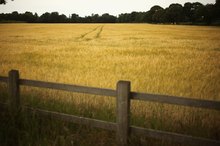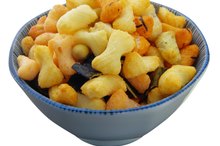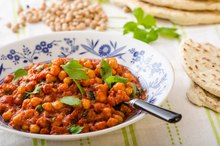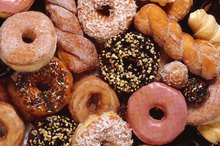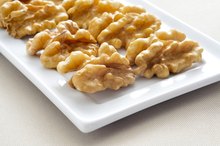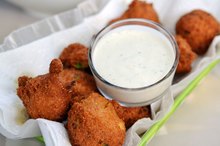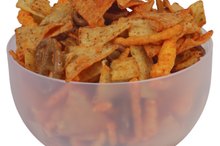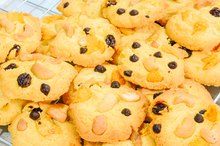Wheat-Free Meal Plans
Two different conditions require avoidance of wheat: a wheat allergy and celiac disease. A wheat allergy causes reactions ranging from hives to difficulty breathing. People with celiac disease can’t consume gluten, which is part of the protein found in wheat, rye and barley, because it prompts the immune system to attack the lining of the small intestine, causing bloating, fatigue and diarrhea. Either of these condition may require that you have a wheat-free diet.
Recommended Foods
Wheat is a prevalent ingredient in a high percentage of processed foods. Gluten and other wheat products, which are often hidden ingredients, are even more widespread. But there's a long list of healthy foods you can include in your wheat-free meal plan.
All fresh, plain frozen, and additive-free dried or canned produce are options, as are fresh or frozen meat, poultry, pork and fish, as long as it isn’t marinated in a pre-made sauce. Hearty staples include legumes such as lentils and chickpeas, and gluten-free grains such as quinoa, buckwheat, arrowroot and any kind of rice. Plain nuts and seeds, eggs, coffee, tea, olive oil, butter, peanut butter and honey are other safe foods.
Breakfast
List of Wheat-Free Foods
Learn More
While most boxed cereals are off-limits on a wheat-free diet, some manufacturers offer gluten-free options. Oatmeal is gluten-free, but is often processed on equipment shared with wheat. If you’re unsure of a supplier’s processing practices, choose polenta or quinoa as your hot cereal. Sweeten them with honey, maple syrup, fresh or dried fruit and chopped nuts.
Any egg dish, including omelets, scrambled, soft- or hard-boiled, poached and fried eggs, offer savory breakfast options. Add cheese, tomatoes, mushrooms, spinach or peppers to your omelets or scrambled eggs. Make toast topped with peanut butter, cream cheese, jam or honey with bread made from gluten-free flour such as potato or rice flour. Homemade fruit smoothies and gluten-free yogurt with fruit are other options.
Lunch and Dinner
Salads, homemade soups and sandwiches on gluten-free bread are light lunch or dinner fare. Avoid deli lunch meat because it sometimes contains wheat-based additives. Slice pieces of roast beef, turkey and chicken off meat you prepare yourself. Also avoid sandwich condiments unless they specify gluten-free on the label. Hummus is a nutritious gluten-free alternative. Rice and quinoa are ideal foundations for vegetable and meat stir-fries. Any soy sauce should have a gluten-free label. Rice noodle pasta, roasted buckwheat and vegetable salad, five-bean chili with rice, pork and lentil stew, spring vegetable risotto, shrimp and scallop stir-fry and spiced lamb with yogurt are just a few main entrée options.
Considerations
Gluten-, Egg-, Soy- & Dairy-Free Foods
Learn More
Many who suffer from celiac disease also suffer from lactose intolerance, at least upon initial diagnosis. When intestinal damage is repaired after several weeks of a strict gluten-free diet, intolerance to lactose often disappears. Milk, cream and aged cheeses do not contain gluten. Yogurt, sour cream, cottage cheese, cream cheese and other types of cheeses sometimes contain gluten or wheat products, so check labels carefully. Adding low-fat dairy to your diet can help you meet your daily calcium needs, which is especially important if your celiac disease went undiagnosed for a long time, leaving you more prone to osteoporosis.
Related Articles
References
- “Eat Well Live Well With Gluten Intolerance”; Susanna Holt; 2009
- “Wheat-Free, Worry-Free”; Danna Korn; 2002
- “The Wheat-Free Cook”; Jacqueline Mallorca; 2007
Writer Bio
Based just outside Chicago, Meg Campbell has worked in the fitness industry since 1997. She’s been writing health-related articles since 2010, focusing primarily on diet and nutrition. Campbell divides her time between her hometown and Buenos Aires, Argentina.
